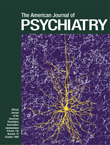This volume, edited by two psychiatrists and an internist for use by the outpatient-based primary care physician, was developed by using a unique collaborative approach, teaming psychiatrists with primary care physicians for each chapter. The type size is somewhat small, but generous use of white space results in a very readable format, which complements the direct, jargon-free, clinically relevant writing style. A brief introduction is understated yet effectively motivational. One chapter introduces the process of psychiatric assessment (emphasizing biopsychosocial understanding and interview technique), another discusses psychiatric diagnosis according to DSM-IV, 11 chapters present psychiatric disorders by diagnostic category, one deals with violence and aggression, followed by chapters labeled “Difficult Patient Situations,” “Particular Mental Health Concerns of the Elderly, Gay Patients, and Women,” “Somatic Treatments,” and “Psychotherapeutic and Behavioral Treatments.” This structure is logical and avoids excessive repetition but separates details of treatment from discussion of the disorders.
Psychiatrists might wish for a text such as this to help their primary care physician colleagues better understand the modern practice of psychiatry, but perhaps they also recall Alexander Pope’s admonition, “A little learning is a dangerous thing;/ Drink deep, or taste not the Pierian spring.” Might one modest-sized book lead a nonreferring primary care physician to get into trouble too often, or is perhaps Thomas Huxley’s epithetic rejoinder more germane: “If a little knowledge is dangerous, where is the man who has so much as to be out of danger?” In this instance this potential risk does not seem paramount, particularly as the issue of when to refer is routinely addressed. Other strengths include the authors’ consistently emphasizing the problem of stigmatization, promoting the use of support groups and providing relevant telephone numbers, and offering brief relaxation technique instructions and the Mini-Mental State.
As a first edition, this work constitutes an excellent effort of experienced academic clinician-authors. It is replete with much useful information and many clinical pearls but has such a broad scope that some room for improvement can be found. For example, in the chapter on depression I regretted not finding any mention of St. John’s wort, the possibility of antidepressant-induced mania or hypomania, or clear recognition of dysthymic disorder. The chapter on sexual disorders is solid, but there is no mention of sildenafil, which has so quickly changed patient workups and treatment. Oddly, there is not even a brief section anywhere dedicated to bipolar disorder, mania, or hypomania. I would have wished that a text for primary care physicians would at least mention the pregnancy risk for someone taking both carbamazepine and birth control pills, and of the teratogenic risks of lithium, carbamazepine, and valproate. My own pedagogic preference would also argue for including more case vignettes (some chapters do have effective examples).
This book would probably work particularly well as part of a primary care residency training program or medical student clerkship, or as part of a liaison psychiatry course or teaching rounds, where clinical cases could make the material come more alive.

